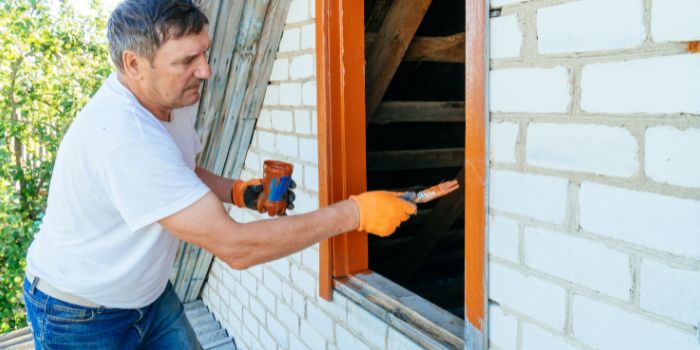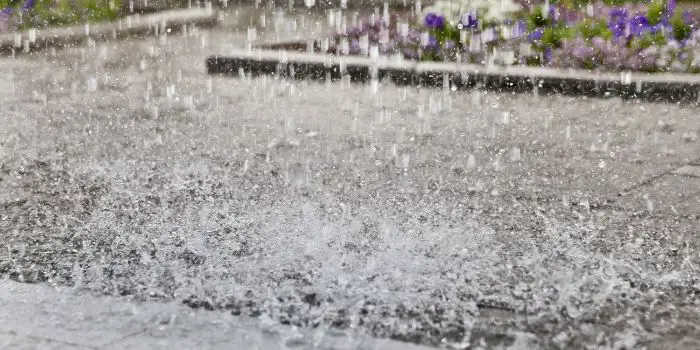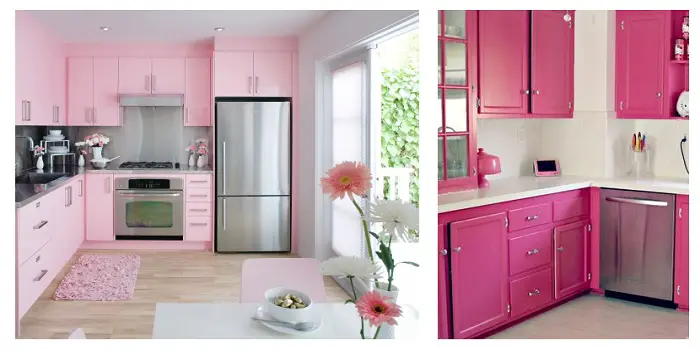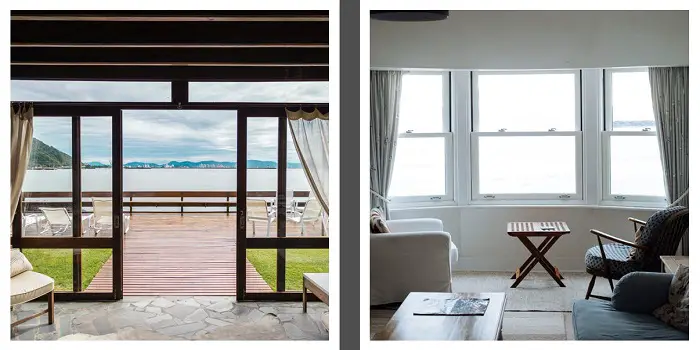
You just moved into your first home and are looking to take on some projects to make it feel like your own.
You’ve decided that painting the interiors and exterior of your home is a great place to start. Well, that’s a great idea. A fresh coat of paint can change the look of your home.
But before you start, there are a few things you should know. Essentially, you want to make sure that you pick the right time of year to paint so that the job will go smoothly.
This article will go over five different weather conditions that can impact your painting project adversely. So, make sure you avoid these conditions when painting your home:
What's Here in the Article:
When Not to Paint Your Home?
1. Direct sunlight
The ideal temperature for exterior painting is between 60-80°F. This range allows the paint to dry properly while also preventing it from drying too quickly or slowly.
However, keep in mind that applying paint in direct sunlight is not recommended for several reasons.
For one, the paint can dry too quickly, making it difficult to achieve an even coat. Also, the full sun will make it difficult to apply the paint evenly and the heat from the sun can cause the paint to blister and peel. The UV rays can also fade the color of the paint over time especially if it’s the exterior surface.
So if you’re looking to achieve the best possible results, it’s better to avoid painting in direct sunlight. Instead, choose a shaded area or wait until the sun goes down. Your paint job will thank you for it.
2. High humidity
The optimum humidity levels for painting are between 40-50%. This range allows the paint to dry properly while also preventing condensation or other issues.
If the humidity in the air is too high, the paint won’t dry properly and will take much longer to cure. Also, high humidity can cause condensation on surfaces, which can lead to paint blistering or peeling.
On the other hand, if the humidity is too low, the paint will dry too quickly and may not adhere properly to the surface.
That’s why it’s important to always check the weather forecast before starting a painting project. By doing so, you can ensure that the conditions are ideal for a successful job.
3. Windy conditions
Not only can strong gusts of air make it difficult for you to control the brush or paint roller, but they can also blow dried paint onto unintended surfaces and create unsightly drips and splotches.
Additionally, very dry weather can cause your freshly-painted surface to dry too quickly, which leads to a chalky and uneven finish.
So if you want great results from your painting projects, always be sure to avoid painting in windy conditions. By doing so, you will protect your work from messes and ensure an even finish every time.

4. When it’s raining outside
Painting your house can be a great way to rejuvenate the exterior of your home. However, it is important to understand that this is not an activity that should be done when it is raining outside. The reason for this is twofold.
First, rainwater can dilute the paint and make it less effective on the surface of your home. Second, rain can quickly wash away any traces of paint you may already have applied, leaving streaks and blotches on the surface.
Therefore, before heading outdoors with brushes and cans in hand, it is best to wait until the weather has cleared up.
5. Cold and snowy weather
Above all, painting your home in the cold or snowy winter months can make it difficult for the paint to adhere to your walls and may result in cracks or other issues.
If you must paint during these cold, freezing weather conditions, be sure to take extra care when applying the paint to ensure that it sticks properly.
Can you paint indoors on rainy days?
You can paint indoors any day, regardless of the weather, unless your indoor humidity is too high. If it is, you can use air conditioning or a dehumidifier to lower the humidity and make it suitable for painting, even if it’s raining outside.
What happens if it rains after painting your home’s exterior?
Also, it is important to note that any type of paint that is prone to mold or mildew should not be applied during damp and humid weather. This is because the excess moisture in the air can cause these types of paints to become deactivated or lose their effectiveness.
If it rains after painting your house exterior, the paint may become diluted and less effective. Additionally, the rain can wash away any traces of paint you may already have applied, leaving streaks and blotches on the surface.
Can Paint Freeze if Stored in Cold Conditions?
Yes, paints can freeze and can go bad if not stored properly.
The speed at which the paint will freeze typically depends on three main factors. The type of paint, the temperature, and where the paint is being stored.
Type of Paint
As you might suspect, water-based paint will freeze at the same temperature that water freezes. This means 32 degrees Fahrenheit or 0 degrees Celsius.
Oil-based paint is more resilient to freezing compared to water-based paint. The oil (usually linseed oil) in these paints will start to freeze at -4 degrees Fahrenheit or -20 degrees Celsius.
This means that if you live in parts of the world that rarely experience freezing, you do not have to worry much about your oil-based paint freezing up.
Temperature
The lower the temperature, the faster the paint will freeze. This means that paint at 32 degrees Fahrenheit will not freeze as fast as paint exposed to 20 degrees Fahrenheit.
And while you may never know the exact temperature at which a particular can of paint will freeze, there are factors that go into how fast it may freeze.
- Is the paint inside the home?
- Is there any insulation around the paint?
- Is the can of paint sealed properly?
However, if the paint is stored in an area that is not heated and is directly exposed to freezing temperatures, then you can expect the paint to be at the freezing stage within 60 minutes.
Storage
Paint tends to freeze faster when it is stored out in the elements. This means that if you store paint inside your garage, it will tend not to freeze as fast compared to storing it outside.
Even though your garage may not be heated, the radiant heat from home may be enough to keep it from freezing as fast.
Keep in mind that a specific type of paint may take longer to freeze compared to others. This will depend on the ingredients inside the paint. While there is no way to know exactly, some paint cans may have that information printed on the side. Or you can find the information on the company’s website.
Share the post "5 Weather Conditions You Should Avoid When Painting Home"

Douglas Becker (aka Painter Doug) has over twenty years of experience as a painter in Adkins, Texas. At present, he resides in Florida with his family.
From painting multi-storeyed houses, condos, and apartments to large commercial buildings and small offices, he had served various customers in areas not only in Adkins but also in Southwest Florida, Sarasota, Naples, and many more. To know more about him check here.




